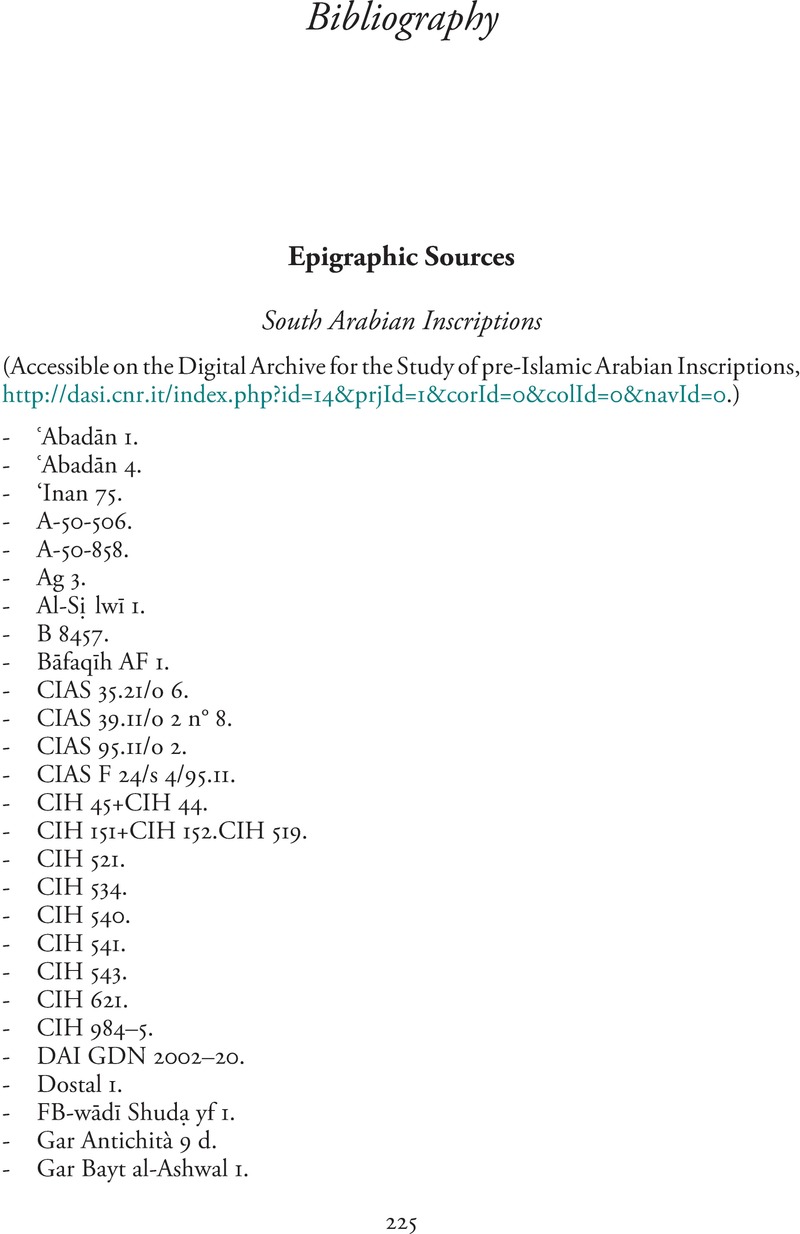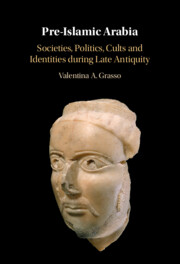Book contents
- Pre-Islamic Arabia
- Pre-Islamic Arabia
- Copyright page
- Dedication
- Contents
- Tables
- Acknowledgements
- Note on Abbreviations
- Chapter 1 An Introduction to the Study of Pre-Islamic Arabia
- Chapter 2 North Arabia between the Late Third and the Fifth Century
- Chapter 3 A Late Antique Kingdom’s Conversion
- Chapter 4 The Shape of the Sixth Century I
- Chapter 5 The Shape of the Sixth Century II
- Chapter 6 The Ḥijāzī Islam
- Chapter 7 Conclusion
- Appendix
- Bibliography
- Index
- References
Bibliography
Published online by Cambridge University Press: 16 February 2023
- Pre-Islamic Arabia
- Pre-Islamic Arabia
- Copyright page
- Dedication
- Contents
- Tables
- Acknowledgements
- Note on Abbreviations
- Chapter 1 An Introduction to the Study of Pre-Islamic Arabia
- Chapter 2 North Arabia between the Late Third and the Fifth Century
- Chapter 3 A Late Antique Kingdom’s Conversion
- Chapter 4 The Shape of the Sixth Century I
- Chapter 5 The Shape of the Sixth Century II
- Chapter 6 The Ḥijāzī Islam
- Chapter 7 Conclusion
- Appendix
- Bibliography
- Index
- References
Summary

- Type
- Chapter
- Information
- Pre-Islamic ArabiaSocieties, Politics, Cults and Identities during Late Antiquity, pp. 225 - 263Publisher: Cambridge University PressPrint publication year: 2023



